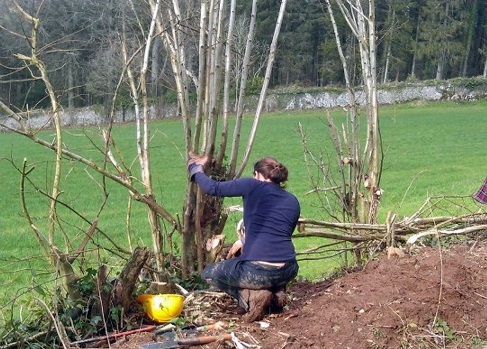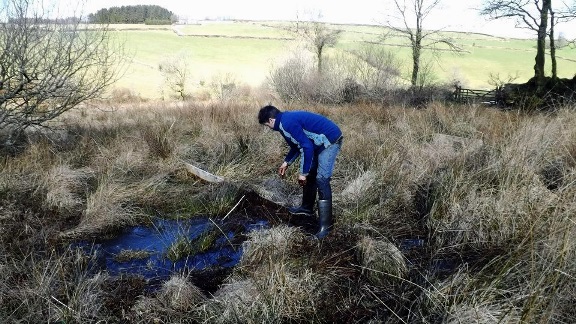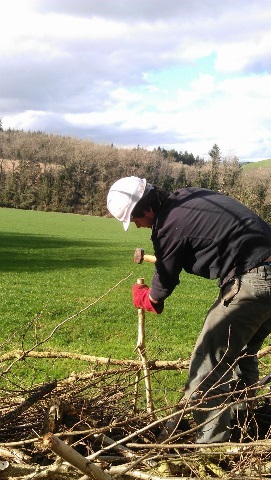Lone Working – Are You Managing the Risk?
This post is greater than 6 months old - links may be broken or out of date. Proceed with caution!

By Debs Rylands, Director of Programmes and Development

Lone workers face all the same hazards as someone working in a team, but the risk is enhanced, not least because there is no immediate help or support in managing issues as they arise. The HSE defines a lone worker as: ‘someone who works by themselves without close or direct supervision’.
In conservation, we generally consider the team members who are out surveying or delivering practical work to be our lone workers, but there are other activities which also need to be considered, such as working alone at the office/base/tool store (including out of hours working) and home and remote workers.
Gathering Information on Risk
Making risk management a team endeavour helps to ensure that your policy and process are relevant and meaningful to your organisation. Without the right information, your paperwork may not be fit for purpose, increasing risk to your team and creating legal problems for your company.
'Any employer whose team members carry out lone working has a legal responsibility to manage the risk that this entails. This may sound like a mammoth task, but a good policy and some easy-to-use processes can make it easy to keep all of your team safe and happy in their roles.'

The way you gather this information will depend on the size and makeup of your organisation, but methods could include:
- Dedicated team meetings
- Including a section on risk management in one to ones
- Focus groups and surveys
- Risk and near miss reporting audits
Only by understanding the risk involved in the work can suitable processes be put in place for your team.
Your policy will state the processes which underpin your risk management. Be clear on where responsibilities lie. Managers are responsible for ensuring that an appropriate lone working risk assessment is in place. This can, however, be completed with, by or for the team member(s) who will be using it. Those team members must also take reasonable care of their own personal safety, including avoiding situations which could compromise their safety.
Employees must know to whom they should report incidents (including near misses). Whether it's through a formal logging system or simply telling the right person and filling out a form, it's important to keep track of everything. It's critical to report lone worker occurrences as they can frequently provide an opportunity to learn something new or find and mitigate a new risk.
It is important to also make specific reference to your lone working protocols.
Lone Working Systems

There is a large number of systems available to support your lone worker and everyone will have their preference. Ask contacts in similar organisations or carrying out similar work what system they use and the benefits and drawbacks of this.
The types of system include:
Buddy System - A coordinated arrangement in which two people take responsibility for each other's safety by maintaining contact with each other and, if necessary, initiating an emergency procedure.
Lone Working Device - A piece of equipment which allows communication with a monitoring centre which will escalate calls or concerns for a lone worker’s welfare.

Lone Working Service (Manned) - System for which no device is issued but relies on the lone worker calling a phone line to check in and out. When an expected check in is not received, service staff follow a contact process before alerting emergency services.
Here at Wild Ideas, we use a Buddy System. This works well for us because, as a training organisation, direct communication and additional care is embedded in our working practices. The buddy system makes it easy to handle changes to anticipated schedules and to provide additional support, where needed. Check in times are agreed between buddies, depending on travel times, phone signal (although we try to avoid lone working where there is no signal!) and the task in hand. The lone worker is expected to check in by phone at the allotted times, with the buddy checking in after a set period of time of no contact, before escalating the emergency process.
Training the Team
As risk assessment is an essential skill for conservation workers, our assessments are written with, and then by, our team members, with management sign off. This does mean that a little more lead-in time is required to make sure that we’ve got it right, but the benefits include:
- The risk assessment and the means of mitigation are understood by everyone and team members are much more confident in their understanding of how to apply this.
- Team members gain those skills which make them more valuable to your organisation and improve their future employability.
- The pressure is taken off a single person to write and update every risk assessment.
In preparing our team members to undertake risk assessment, we deliver a short course which underpins their skills in identifying hazards, assessing risk and identifying and applying appropriate risk mitigation.
When the team comes together to manage risk and to safeguard each other’s safety, it becomes easy to meet our legal requirements and the team are fully on board with making our work safe for everyone involved. Our lone working team members know that there is someone on hand to offer support and that we are operating as a team to ensure everyone’s safe working practice.
You can book yourself or members of your team onto our Risk Assessment in Conservation course here
More from Wild Ideas